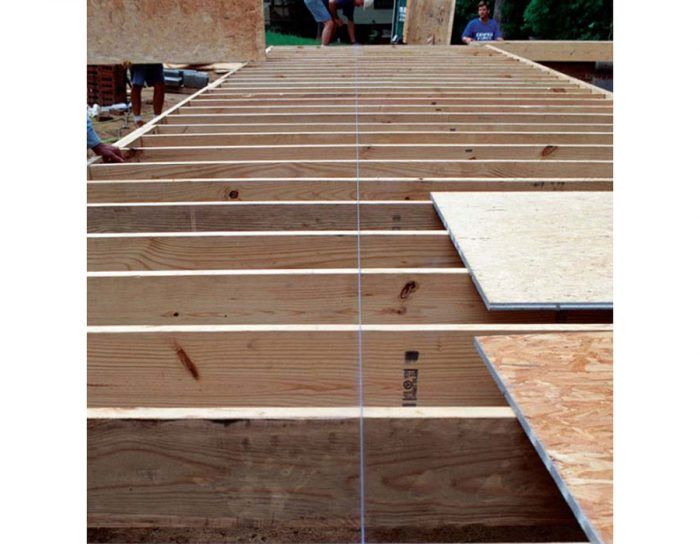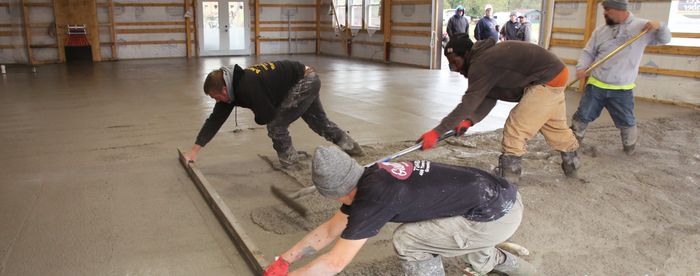Habitat for Humanity How to Build a House: Foundation Fundamentals
Establishing a sound connection between the house, the foundation, and the earth is crucial. These foundation fundamentals can help get you started.

Synopsis: All across this country, in hundreds of towns an cities, people from all walks of life are working with Habitat for Humanity to build decent, modest housing. In the last 25 years, more than 100,000 affordable homes have been built in America and in other countries by Habitat for Humanity affiliates.
If Habitat for Humanity can build affordable homes, why can’t anyone? In Habitat for Humanity How to Build a House, Habitat volunteer and Fine Homebuilding contributor Larry Haun provides step-by-step instructions for building a house from the ground up. For beginners and professionals alike, the book is filled with tips that come from Larry’s four decades of experience.
In this excerpt from Chapter 3: Firm, Flat, Level, and Square — Foundations and Floors, you’ll learn how to form and pour footings and how to build the foundation walls.
Foundations and Floors
Floors may seem to be the simplest of the challenges facing a new builder, but the importance of establishing a firm, sound, dependable connection between a house, the foundation, and the earth cannot be overstated. Everything rests, quite literally, on the quality of the foundation and framing work done in the first few days or so after the concrete contractor has left. Our first house, in coastal Oregon, had a concrete foundation made from beach sand. Sixty years of wind and rain had washed much of that sand back toward the beach, leaving us with a shaky, tilted floor that wasn’t even bolted to the foundation.
Know the Foundation Fundamentals
Take a deep breath. Having found and purchased a lot, bought or drawn up the plans, obtained the permits, cleared and run power to the site, and completed the necessary grading, drainage, and excavation work, you’re finally ready to begin working on the foundation. You’ve already come a long way.
Whenever I think about foundations, I can’t help but recall being told as a child, “You’re on your feet most of the day, so wear good shoes.” A foundation is like a pair of shoes—quality makes all the difference. Walk around all day in poor shoes and your whole body feels lousy. Build a house on a poor foundation and the entire house is unstable.
There are quite a few foundations that can be used for houses. The three major types— slabs, crawl spaces, and full basements. If you’re planning to build a house, it’s a good idea to consider all your foundation options. Talk to builders and foundation sub contractors in your area to find out which foundations and special site conditions to consider. If you’re building a crawl space foundation, find out about the ventilation requirements. In some areas, vents are required in crawl-space foundations. In other areas, codes have been updated to allow for an unvented crawl space.
Clay can cause problems
Local soil conditions have a lot to do with choosing and constructing a foundation. Extra care must be taken when building on clay-rich soils, which exist in many parts of the country. Clay expands when saturated with moisture. This can exert tremendous pressure on a foundation. I have seen how this expansive action moves footings, cracks slabs, and causes extensive damage to a house. When builders are aware of the potential problems with clay soil, they can take precautions to avoid damaging effects. I have worked on sites where several feet of clay soil were removed and replaced with non expansive soil, which was then compacted before the footings were poured.
by Larry Haun.
For more photos and details on foundation fundamentals, click the View PDF button below.
Fine Homebuilding Recommended Products
Fine Homebuilding receives a commission for items purchased through links on this site, including Amazon Associates and other affiliate advertising programs.

Bluetooth Earmuffs

Anchor Bolt Marker

Plate Level







